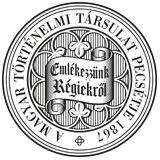Századok – 2007
TANULMÁNYOK - Tusor Péter: Habsburg bíborosjelölések a 17. században V/1121
HABSBURG BÍBOROSJELÖLÉSEK A 17. SZÁZADBAN 1151 A Habsburg-bíborosjelölések történetében tulajdonképpen ekkor következett be az a fordulat, amely megalapozta a 18. század jószerével semmilyen ellentmondást nem tűrő császári nomination, amelyek osztrák császári Jogként" a 19. században is továbbéltek, és amelyeken tulajdonképpen Salzburg és Bécs mind a mai napig élő „bíborosi szék" jellege is nyugszik. A kánonok által az egyházfőknek teljes szabadságot biztosító kérdésben beállt változás azt szimbolizálja, hogy a pápaságnak a vesztfáliai békekötésben megmutatkozó hatalmi marginalizációja ekkorra visszavonhatatlanná vált.205 Ráadásul 1747-ben Mária Teréziának (1740-1780) konkordátum formájában is sikerült elismertetnie XIV Benedek pápával (1740-1758), hogy amennyiben a császári és magyar királyi koronát két külön személy viseli, utóbbinak törvényes joga (!) bíborosokat nevezni. Ezen írásban biztosított kiváltság közvetetten azon erőfeszítések kései sikerét is jelzi, amelyet Magyarország prímásai tettek a 17. század második felében a magyar koronabíborosi „intézmény" életre keltése, illetve az esztergomi „bíborosi szék" kialakulása érdekében.206 HABSBURG NOMINATIONS OF CARDINALS IN THE 17th CENTURY (Summary) by Péter Tusor The present study overviews one of the central areas of the network of relationship between pope and emperor in the early modern era. By applying the custom of so-called „crown cardinals", going back to the 14th and 15th centuries, the Habsburgs, like other great powers, were able to enhance their influence in Italy, and modify the composition of the body electing the popes. Moreover, creating cardinals from among their own subjects involved considerable benefit in home policies as well, by strengthening the position of leading clerics who played a dominant role in the government. As early as the 15th and 16th centuries the Habsburgs regularly used the method of nominating/presenting candidats for the cardinalship in order to influence the policies of the Papal Court. Although conflicts occured sometimes, their presentations generally succeeded in the end. Thanks to the growing role of France and the gradual secularisation of poltics, this area of the relationship between the Empire and the Papacy began to dissolve in the first part of the 17th century. In 1607 the election of imperial candidats for the cardinalship and their ranking was still done in the course of common diplomatic negotiations. By the 1610s the prime aim of nominating cardinals had become to enhance Habsburg influence in Italy. In the 1620s several prelate-politicians of the Empire (eg. Ernst Adalbert Harrach and Péter Pázmány, archbishops of Prag and Esztergom respectively) could rise to the position of princes of the Church. Yet to increasing Habsburg demands Rome reacted by closing the rows. Between 1629 and 1652 not a single subject of the Habsburgs was able to gain the purple. This contrast between ever more intensive, almost irrational efforts on the part of the Habsburgs to augment their influence, and the popes' growingly determined refusal remained a constant phenomenon until the end of the century. Habsburg policies were hindered in many aspects. The greatest obstacle was international concurrence, for the France of Louis XTV proved even more agressive in this regard. Another problem was caused by the personal union between the crowns of the Empire and the Kingdom of Hungary. For the right of nominating a cardinal was linked to the person of the ruler and not to his 205 Tusor Péter: Az esztergomi „bíborosi szék" történetéhez. Vigilia 69. (2004) 13-24. 206 Az itt elmondottak részletesebben és bővebb apparátussal: Tusor Péter: Purpura Pannonica. Az esztergomi „bíborosi szék" kialakulásának előzményei a 17. században. (Collectanea Vaticana Hungáriáé 1/3.) Budapest-Róma 2005.
